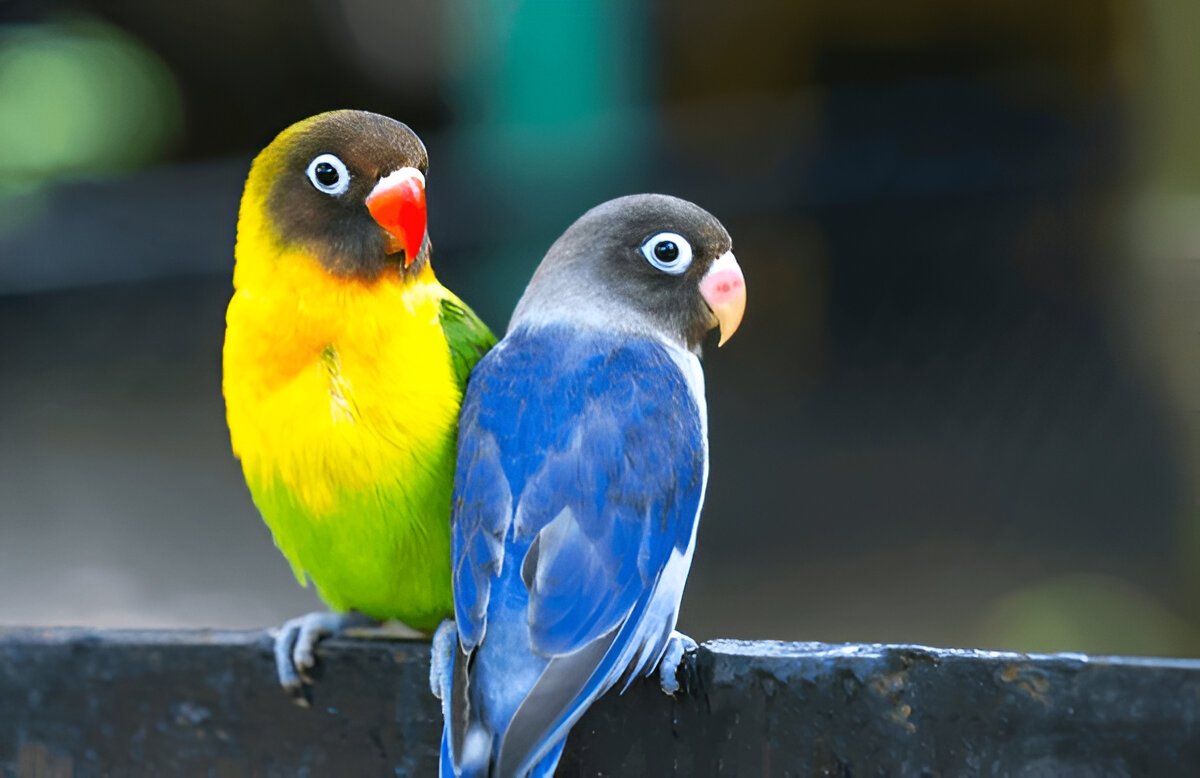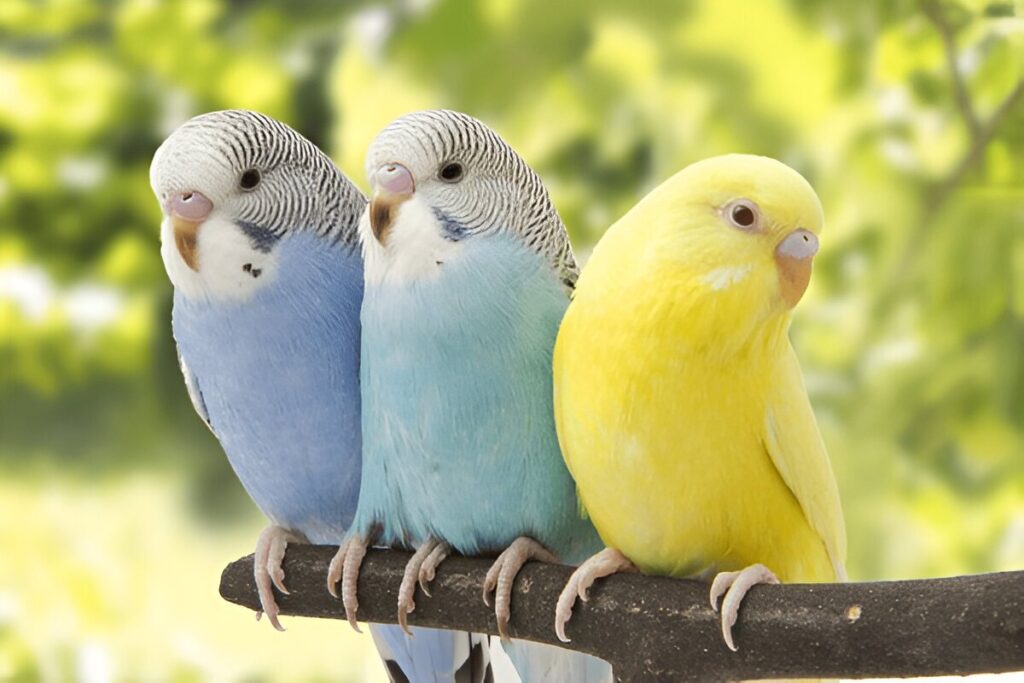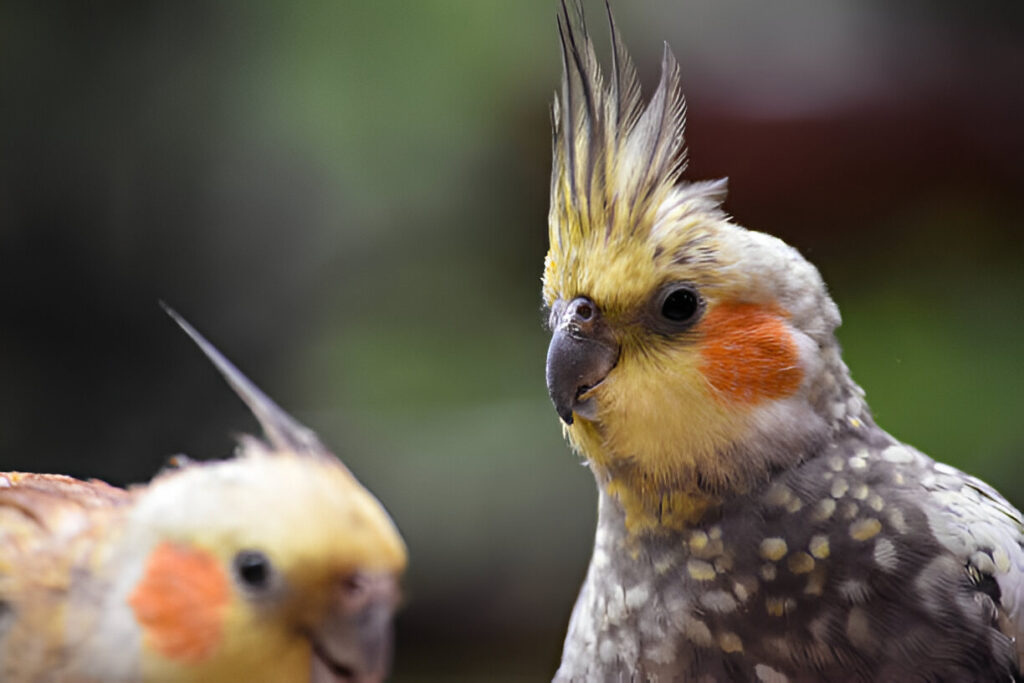Lovebirds bird : The Ultimate Guide to Caring for Your Feathered Companions
Lovebirds are among the most popular pet birds, known for their vibrant colors, playful personalities, and strong pair bonds. These small parrots are native to Africa and have captured the hearts of bird enthusiasts worldwide.
Whether you’re a first-time bird owner or an experienced avian lover, lovebirds make wonderful companions. In this comprehensive guide, we’ll explore everything you need to know about lovebirds, from their history and physical characteristics to their care, behavior, and unique traits.
1. The History and Origins of Lovebirds
Native Habitat
Lovebirds are native to the African continent, specifically in regions like Madagascar, Tanzania, and Zambia. They inhabit a variety of environments, including savannas, forests, and arid regions. In the wild, lovebirds are highly social and live in flocks, which helps them protect themselves from predators and find food.
Discovery and Domestication
Lovebirds were first brought to Europe in the 19th century, where they quickly gained popularity as pets due to their vibrant colors and affectionate nature. Over time, selective breeding has produced a wide range of color mutations, making them even more appealing to bird enthusiasts.
Popularity as Pets
Today, lovebirds are one of the most commonly kept pet birds worldwide. Their small size, playful personalities, and ability to form strong bonds with their owners make them an excellent choice for families, singles, and seniors alike.
2. Physical Characteristics and Color Variations
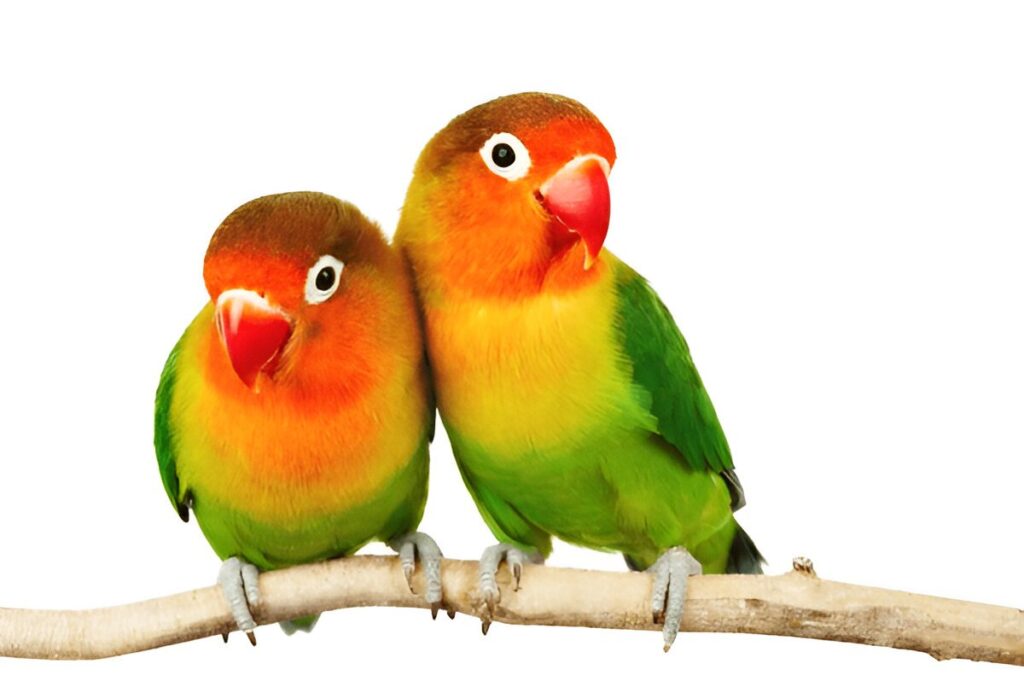
Size and Appearance
Lovebirds are small parrots, typically measuring 5–7 inches (13–18 cm) in length and weighing around 40–60 grams. They have a stocky build, a short tail, and a relatively large head with a strong beak.
Color Variations
Wild lovebirds are primarily green, but selective breeding has produced a wide range of colors, including:
- Blue
- Yellow
- White
- Violet
- Peach-faced
- Black-masked
Gender Differences
Distinguishing between male and female lovebirds can be challenging, as they look very similar. However, females are generally slightly larger and have a more rounded head shape. DNA testing or surgical sexing is often required for accurate gender identification.
3. Behavior and Social Nature
Flock Animals
In the wild, lovebirds live in large flocks and are highly social creatures. As pets, they thrive on interaction with their human companions and other birds. If you’re away from home often, consider getting a pair of lovebirds to keep each other company.
Pair Bonding
Lovebirds are known for their strong pair bonds, often forming lifelong partnerships. They are highly affectionate and enjoy preening each other, sharing food, and cuddling. This behavior has earned them the nickname “lovebirds.”
Playful and Energetic
Lovebirds are full of energy and love to play. They enjoy climbing, chewing, and exploring their surroundings. Providing plenty of toys and activities is essential to keep them entertained and mentally stimulated.
4. Habitat and Housing Requirements
Cage Size
Lovebirds are active birds that need plenty of space to fly and play. A cage that is at least 24x24x24 inches is recommended for a single lovebird, with larger cages needed for pairs or small flocks.
Cage Setup
- Perches: Provide multiple perches of varying thickness to keep your lovebird’s feet healthy.
- Toys: Lovebirds are intelligent and curious, so include toys like mirrors, bells, and ladders to keep them entertained.
- Food and Water Dishes: Use sturdy dishes that are easy to clean.
Location
Place the cage in a quiet, well-lit area away from drafts and direct sunlight. Lovebirds are social birds and enjoy being part of the family, so choose a location where they can interact with you.
5. Diet and Nutrition for Lovebirds
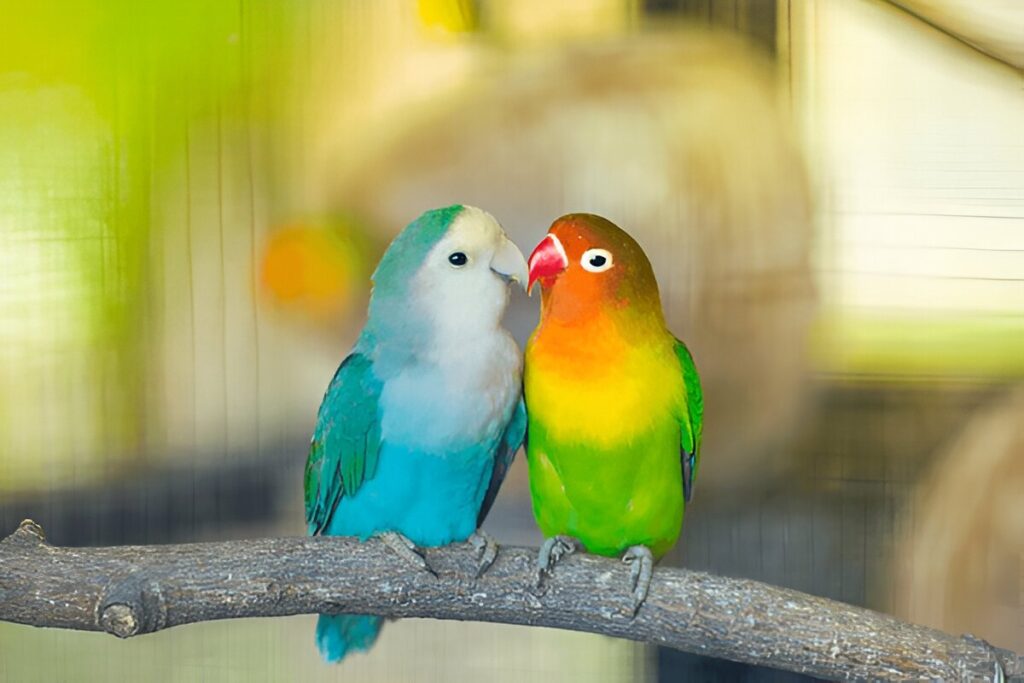
Seeds and Pellets
A balanced diet is essential for keeping your lovebird healthy. While seeds are a staple food for lovebirds, they should not be the only component of their diet. High-quality bird pellets provide essential nutrients and should make up about 60–70% of their diet.
Fresh Fruits and Vegetables
Lovebirds enjoy a variety of fresh fruits and vegetables, such as:
- Apples
- Carrots
- Broccoli
- Spinach
- Berries
These should be offered daily to provide vitamins and minerals.
Treats and Supplements
Occasional treats, such as millet sprays, can be given in moderation. Calcium supplements, such as cuttlebone, are also important for maintaining strong bones and beaks.
Water
Fresh, clean water should always be available. Change the water daily to prevent contamination.
6. Breeding Habits and Reproduction
Mating Behavior
Lovebirds are monogamous and form strong pair bonds. During courtship, they engage in mutual preening, feeding, and vocalizations. Once a pair has bonded, they will often mate for life.
Nesting
Lovebirds are cavity nesters and prefer to build their nests in tree hollows or nest boxes. In captivity, provide a nesting box filled with soft materials like shredded paper or coconut fiber.
Egg Laying and Incubation
Female lovebirds typically lay 4–6 eggs, which they incubate for about 23 days. Both parents take turns incubating the eggs and feeding the chicks once they hatch.
Chick Development
Chicks are born blind and helpless and rely on their parents for food and warmth. They fledge (leave the nest) at around 6–8 weeks and become independent shortly after.
7. Common Health Issues in Lovebirds
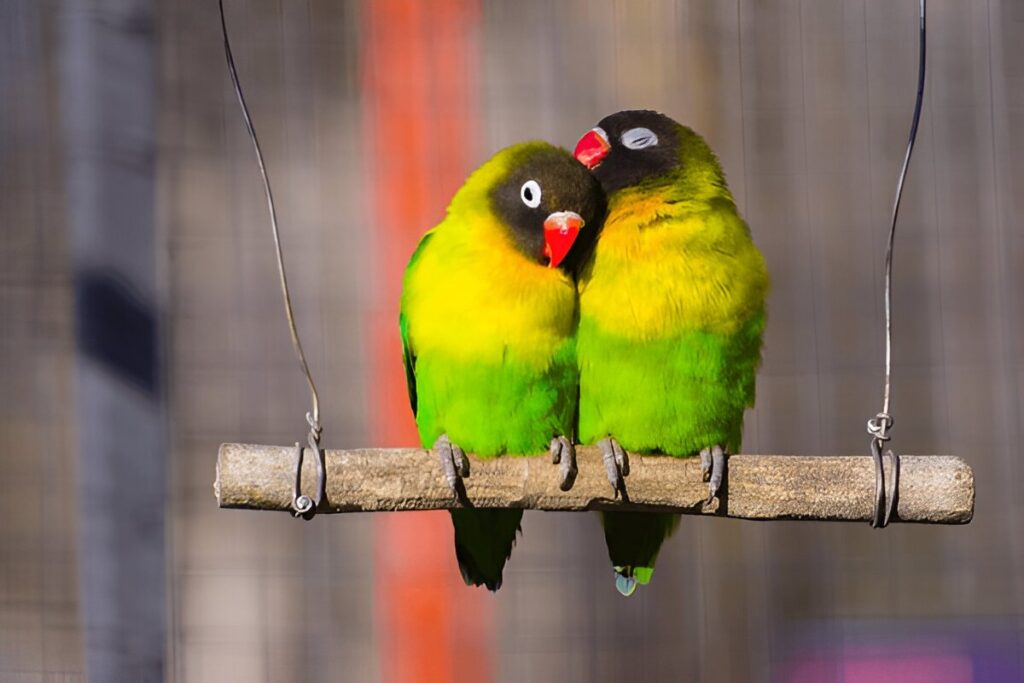
Respiratory Infections
Lovebirds are prone to respiratory issues, often caused by poor ventilation or exposure to drafts. Symptoms include sneezing, wheezing, and nasal discharge.
Mites and Parasites
Mites can cause itching, feather loss, and skin irritation. Regularly check your lovebird for signs of parasites and consult a vet if needed.
Obesity
A diet high in seeds and lack of exercise can lead to obesity. Ensure your lovebird has a balanced diet and plenty of opportunities to fly and play.
Regular Vet Check-Ups
Annual vet visits are essential for monitoring your lovebird’s health and catching any potential issues early.
8. Tips for Caring for Lovebirds as Pets
- Provide Mental Stimulation: Rotate toys and introduce new ones regularly.
- Encourage Exercise: Allow your lovebird to fly outside the cage in a safe, enclosed space.
- Maintain a Clean Environment: Clean the cage and dishes regularly to prevent bacteria buildup.
- Spend Quality Time: Interact with your lovebird daily to strengthen your bond.
Conclusion: Why Lovebirds Make Great Pets
Lovebirds are more than just pretty birds—they are intelligent, social, and full of personality. Their small size, vibrant colors, and ability to form strong bonds with their owners make them a joy to have around. With proper care, a balanced diet, and plenty of love, your lovebird can live a long, happy life as a cherished member of your family.
Whether you’re a seasoned bird owner or considering your first feathered friend, lovebirds are an excellent choice. Their cheerful demeanor and playful antics will bring endless joy and companionship to your home.
Yuns Legdm is a passionate advocate for pet care and the founder of this website, dedicated to providing valuable information for fellow pet lovers and veterinary professionals worldwide. With a deep love for animals, Yuns created this platform to connect passionate pet owners with expert insights from veterinarians around the globe.
This website grows with you—the passionate pet owners and veterinary experts—creating a trusted space where knowledge, experience, and love for animals come together. Whether you’re seeking advice on pet health, nutrition, or general well-being, this platform is here to support you on your journey of responsible and loving pet care.

